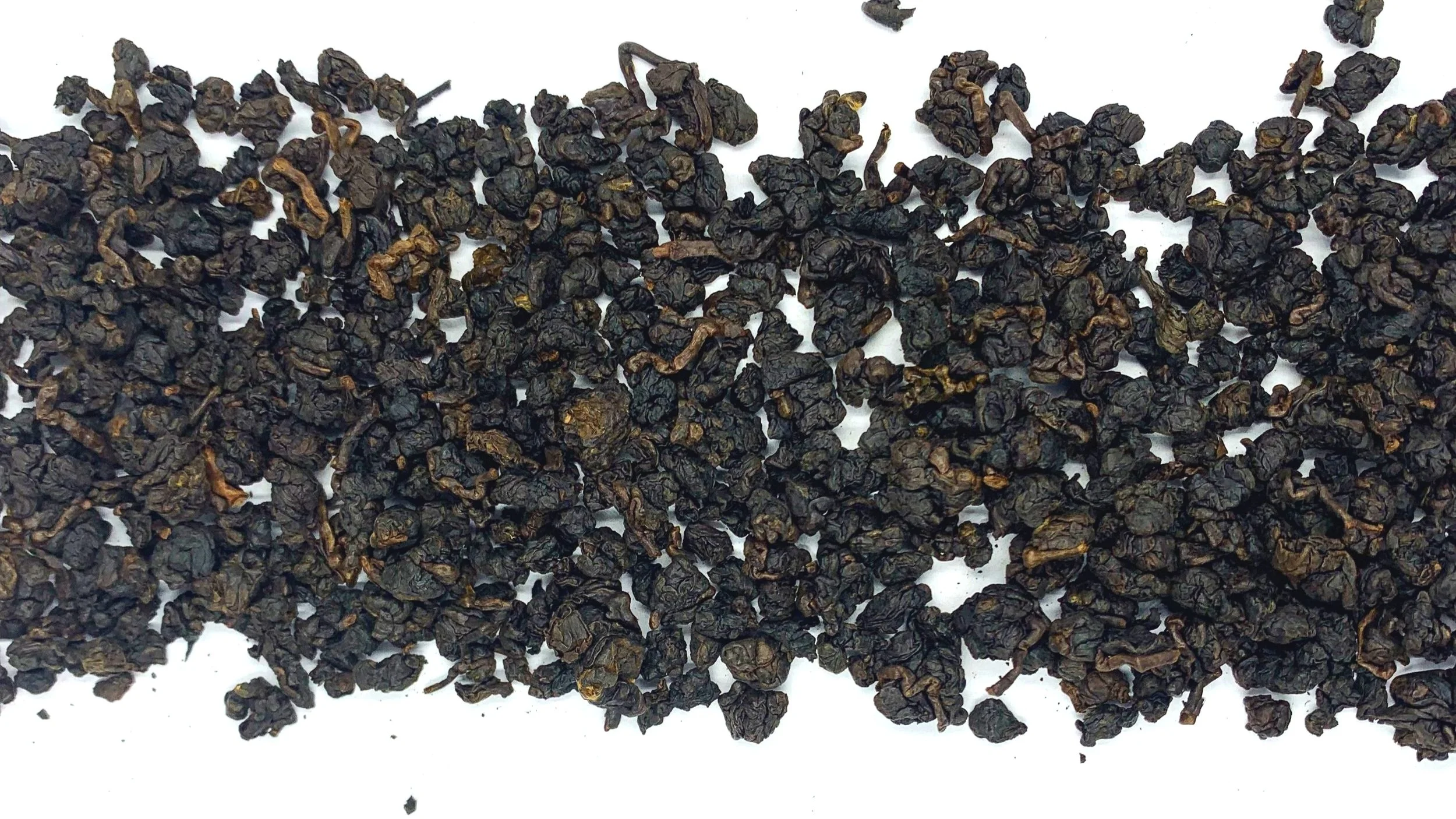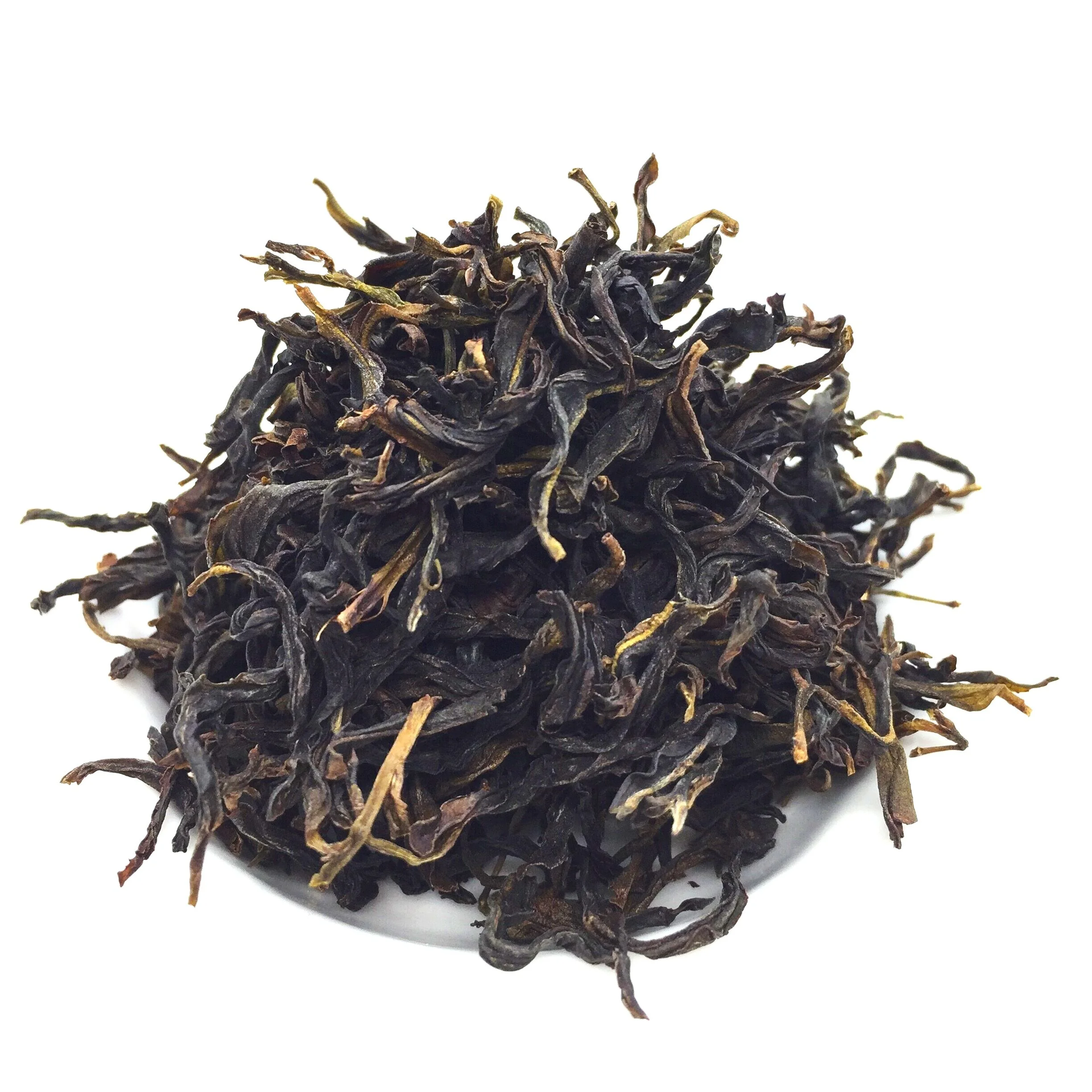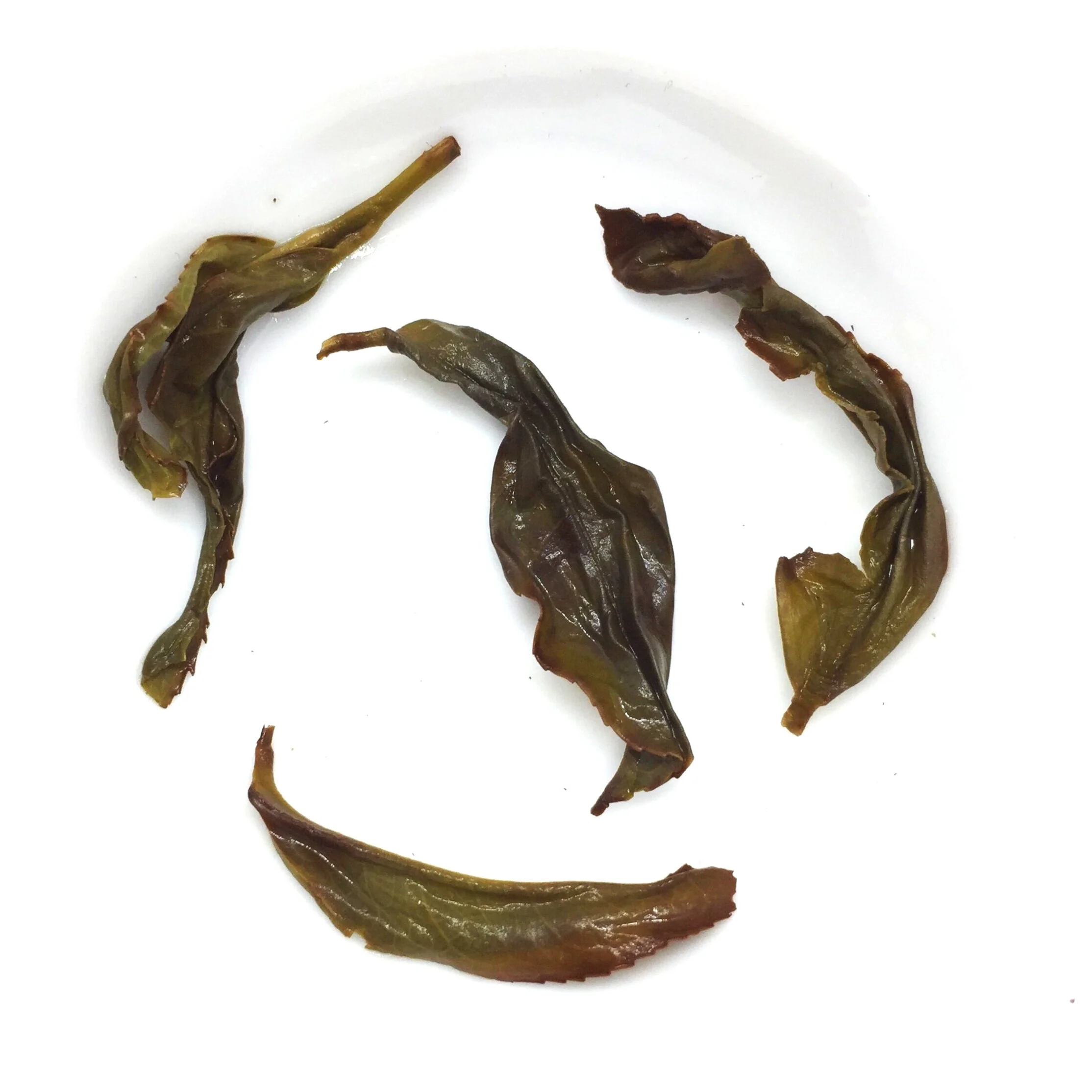Almond Blossom Aroma
Almond Blossom Aroma
Xingren Xiang, is a unique and surprising tea from the Phoenix Mountains in Guangdong, China. Highly viscous and aromatic, the small, slender leaves of this particular tea cultivar brew and sweet and aromatic tea soup suggestive of almonds blossoms and
Renowned among connoisseurs, Phoenix, or Dan Cong, oolongs are distinctive for their emphasis on the character of the specific tea-bush they are harvested from. The older-tree material our Xingren Xiang comes from adds to the depth and character of this tea. It is highly infuse-able and leaves a lingering sweetness and fragrance on the palette.
Origin - Guangdong, China
Location - Shen Yan 深亚, Feng Xi Guan District, Chao An County
Harvest - Spring ‘21
Roast - 3 times
Tastes Like - Almond Blossom, Yellow Squash, Hops
Sold in one ounce in
Almond Aroma “Xingren Xiang” (杏仁香) Tea Name
Xingren “Almond” Aroma is one of the top ten fragrance categories of Phoenix Dan Congs, and includes the variety with the same name as the fragrance category, “Almond Aroma,” as well as other rare varieties such as Peach Kernel Aroma (桃仁香).
Another name for Almond Aroma Dan Cong that is used by tea farmers is “Ju Duo Zi” (锯剁仔), meaning “saw-cut.” This name comes from the deep and sharp serrations on the edge of the tea plant’s leaves.
Almond Aroma Dan Cong History
The Almond Aroma tea in current circulation was originally cloned from a mother tree in 1966, making most tea trees now more than 50 years old. The oldest mother tree was said to be more than 300 years old (although there is no way to verify this), but that tree died in 1970.
Almond Aroma Dan Cong Tea Plant Characteristics
Almond Aroma tea plants are ready to be picked early. Along with Milan Xiang, it is among the earliest of Dan Cong varieties, usually getting picked in mid-March with picking lasting 10-15 days. The tea plants are delicate, and the plants are picked fairly young, so the costs for picking and stem-removal are a bit higher for this variety.
Dan Cong Tea Category
“Dan Cong” (单 枞) literally means “single bush,” as these are oolong teas that are made from the leaves that are picked from a single tea tree. After processing, the tea leaves have a strip-shaped appearance. Tea producers noted that each tea tree produced a unique taste. Each tea was named after the unique fragrance that the finished tea leaves exhibited. It is said that all Dan Cong cultivars are descendants from the Shui Xian (水仙) cultivar.
Dan Cong History
Dan Cong has a long history. According to "Song History, Ji" (宋史.纪) from the collection of Chinese historical books known as the “Twenty-Five Histories'' (二十五史), in the second year of Jingyan in the Southern Song Dynasty (1278), Emperor Song Bingnan (宋帝昺) fled to Chaozhou (潮州) in Guangdong Province. The story goes that he passed through Fenghuang Wudong Mountain (凤凰乌岽山) and his thirst was unbearable. His servants picked leaves from a tea tree that had leaves that looked like the tip of a wren’s mouth and brewed them. The tea quenched his thirst and he was pleased, so he gave the tea the names “Wren beak” (鹪嘴) tea or “Song Species'' (宋种). People in the area began to take these tea trees and cultivate them in their back yards and in the mountains. The teas were grown naturally in a way similar to how they grew in the wild.
Tea Growing Region
To be considered authentic Dan Cong, the tea must be grown in the Phoenix Mountain (凤凰山) area in Guangdong’s Chao An County (潮安县) and must be one of the well-known cultivars.
The Phoenix Mountain tea area has a subtropical monsoon climate. It does not get too cold in the winter nor too hot in the summer. It is a mountainous region and has a complex topography and a large disparity of altitude from one region to the next. Many areas get short sunshine, abundant clouds and rain, early winter cold, late spring cold, and no sweltering heat in midsummer. There is a dry season that lasts from October to January and a rainy season that lasts from February to September. The spring season has heavy fog and high humidity, and the rainfall during the rainy season accounts for 91.25% of the rainfall for the entire year.
Phoenix Town “Fenghuang Zhen” (凤凰镇) is surrounded by high mountains on all sides with 8 peaks that exceed 1000 meters above sea level:
Fengniao Ji Mountain (凤鸟髻山) - 1498 m (the highest in eastern Guangdong Province)
Wudao Mountain (乌岽山) - 1391 m (an area rich in famous tea)
Dashi Mountain (大质山)
Baihua Mountain (百花山) - 1144 m
Chicken God Mountain “Ji Shen Shan” (鸡神山) 1181 m
Jigongji (鸡公髻) - 1409 m
Bijia Mountain (笔架山) - 1135 m
Wanfeng Mountain (万峰山) - 1316 m
Lion Head (狮子头岽) - 1161 m
The tea-planting soil in the Phoenix Mountain region can be divided into four categories: yellow soil (黄壤), red soil (红壤), crimson soil (赤红壤), and “rice paddy soil” (水稻土). The natural soil parent material is mostly weathered granite.
Dan Cong Classification Types
Dan Cong teas can be named and classified based on various criteria including tea bush shape, leaf appearance, origin location, origin stories, and tea aroma. There are over 80 varieties of Dan Cong tea on the market. In particular, tea aroma is a very common way to classify and name Dan Congs.
Some of the most common aroma types are:
Huang Zhi Xiang “Yellow Gardenia Aroma” (黄栀香)
Gui Hua Xiang “Osmanthus Aroma” (桂花香)
Jiang Hua Xiang “Ginger Flower Fragrance” (姜花香)
Yu Lan Xiang “Magnolia Aroma” (玉兰香)
Rou Gui Xiang “Cinnamon Aroma” (肉桂香)
Ye Lai Xiang “Tuberose Aroma” (夜来香)
Shan Yun (山韵)
The Dan Cong counterpart to the well-known “yan yun” (嚴韵) quality of Wuyi Rock Oolongs would be what is called “shan yun” (山韵). Similar to yan yun, the term could be translated as “mountain rhyme” or “mountain rhythm,” the essence of the mountains from which the tea came that gives it high-quality characteristics such as a sweet and unique taste, floral fragrance, resistance to oversteeping, a memorable aftertaste, and the ability to last for many infusions.
Shan yun is said to be determined mostly by three characteristics: special environmental conditions, special tea tree species, and special tree age selection. Each tea has what is called “di yu xiang” (地域香), meaning “regional fragrance” due to each growing region’s unique terroir. Important factors include the mineral composition of the soil and the climate of the growing region. In the Phoenix Mountains, Dan Cong tea trees grow on rocky terrain, with dense fog, mostly diffuse light and little direct sunlight, lots of rainfall, and moderate temperatures. The soil is rich in trace minerals, and the tea tree’s roots, which stretch to great depths (generally exceeding the four to five meter height of the tree) absorb the minerals and convert them into tea polyphenols, alkaloids, linalool, theanine, and various vitamins.
Phoenix Mountain Dan Congs are said to be descendants of Shui Xian of which there is variation in tree characteristics such as maturity dates, leaf shapes, etc. A single plant with unique characteristics is selected and propagated. The Phoenix Shui Xian is said to have strong adaptability and resistance to stress, and produces tea with a natural floral fragrance and sweet honey taste.
The old tea trees (more than 70 or 80 years old) growing in the high mountain regions (600 to 700 meters above sea level) are said to produce teas with the most “shan yun” qualities.
Dan Cong Tea Processing
There is a saying among Phoenix Mountain tea farmers “cai cha buguo ri, zuo (zao) cha nao guoshi,” which means “when picking - there’s not enough time, when processing - the tea is already out-dated” (采茶不过日,做(造)茶孬过时). In other words, to produce the best Phoenix Mountain Dan Cong you need to pick the tea leaves at just the right time, and then nothing can go wrong to delay the following steps during tea processing, otherwise the resulting quality will suffer. If the tea is not picked at just the right time, it may lose its “shan yun” quality.
Dan Cong processing has several steps including: picking (采摘), sun-drying (晒青), air-drying (晾青), bruising (碰青), shaking (摇青), resting (静置), fixing (杀青), rolling (到揉捻), and baking (烘焙). The tea may be charcoal roasted up to three times. After the first roast it is necessary to pick through and select out the best tea leaves. As with unlucky climatic conditions, if the craftsmanship is not up to par, or an issue arises at any step in the tea-making process, the finished product will no longer display the sought-after “shan yun” of a high-quality Phoenix Mountain Dan Cong.




